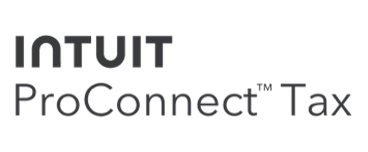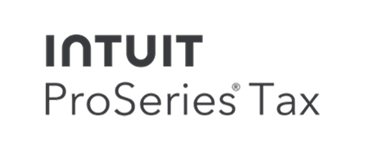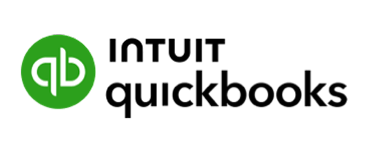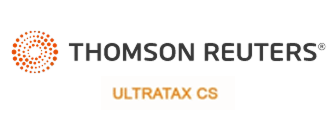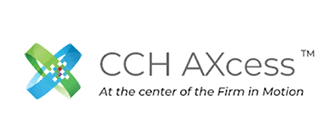
How to Price Tax Preparation Services for 2026: 7 Steps to Audit Your Tax Practice Pricing Before January
Busy season is around the corner, and 2026 brings new challenges, from simmering inflation to rising software and staff costs. The last thing you want is to like it’s 2016 while operating in 2026. Smart firm owners use the quiet before January to audit their pricing so they don’t work overtime for 2016 rates. In fact, firms that overhaul their pricing often raise their profit margins 2–3x, transforming their practice from overworked to profitable. You deserve to get paid for the value you deliver. Let’s make sure 2026 is the year your pricing reflects your worth.
-
Review Last Season’s Numbers
Start your pricing audit with a look in the mirror. Pull data from last tax season: total fees earned per client or service, and the hours or effort each took.Identify where you earned too little for too much work.
For example, if a business return brought in $600 but consumed 15 hours, that effective rate (~$40/hour) likely isn’t sustainable. It’s common for small firms to underprice (often out of fear of losing clients), but small adjustments can create big margin shifts. Even a modest fee increase or better packaging of services can significantly boost your margins.
SmartPath’s founder has helped 1,700+ firms do exactly that, often doubling or tripling their margins. So, spot the leaks in your pricing now.
Which services or client types were least profitable? Flag them for changes. -
Compare Against Industry Benchmarks
Next, see how your fees stack up to the broader market. While every practice is different, knowing the going rates can reveal if you’re way off-base.
According to a recent Intuit study, the national average fee for an individual 1040 with two W-2s and a state return was about $238. More complex scenarios (multiple 1099s, Schedule D/E, etc.) averaged $350–$537.If you’ve been charging, say, $150 for a fairly involved return, you might be short-changing yourself. It’s a good idea to conduct an annual review of your fee structure before tax season to ensure you’re not undercharging your practice.Of course, benchmarks are not a mandate. Your region, niche, and expertise matter. But if your prices are dramatically lower than average with no clear reason, it’s a red flag.
Use comparative data as a guideline for where you may have room to increase fees. And remember, your pricing should factor in your costs plus a reasonable profit. Don’t apologize for building a healthy margin; the market expects to pay professionals appropriately. -
Factor in Rising Costs (Don’t Eat Inflation)
When auditing your pricing, update your baseline costs. Inflation hasn’t vanished – rent, software, e-sign tools, and salaries tend to creep up each year. If your prices stayed flat last year, you effectively gave clients a discount and took a pay cut in real terms.
If your tax prep fee for an average 1040 has been $300 for years, consider the cumulative rise in expenses since you set that price. Even a 5–10% bump may be needed just to maintain your margins. Also weigh new complexity on the horizon: for instance, with major tax law changes (like TCJA provisions sunsetting in 2026), advisory demand is surging. If clients will need more hand-holding and planning, build that into your 2026 fees now.Bottom line: don’t wait until you feel the squeeze in March. Proactively adjust your fee schedule in January to reflect the current reality of costs and complexity. Your future self (in April) will thank you. -
Evaluate (and Evolve) Your Pricing Model
How you price is as important as what you price. An annual audit should question your pricing model: are you charging in a way that maximizes value for both you and your clients?
Many tax pros still bill per form or hourly by default. These methods are simple, but they have hidden costs. For example, pricing purely “by the form” can inadvertently penalize efficiency and make revenues unpredictable. It was found in 2008, that most commercial preparers who price per-form can’t even provide an upfront estimate because they don’t know which forms will be needed until the work is done. This lack of clarity frustrates clients and makes your service seem like a commodity. Hourly billing has a similar issue as it undervalues your real expertise in an age of automation.As SmartPath’s research notes, with AI and modern software automating many tasks, a return that once took you 6 hours might take 2; if you bill by the hour, should you earn only one-third as much for the same outcome? “No, but that’s exactly what happens under this model,” SmartPath VP Will Hamilton warns.In 2026, consider moving toward fixed fees or value-based pricing. Bundle tax prep with related services (bookkeeping, advisory sessions, etc.) for a set package price, or set fees based on the client’s situation complexity rather than just tallying forms. Fixed/value pricing yields predictability for clients and rewards you for efficiency and expertise, not punishes you for it.
If you’re unsure how to switch, even offering a base package plus an up-front range estimate is better than clinging to the old bill-after-the-fact approach. The goal is a model that aligns price with the value you deliver, not just the paperwork you produce.
-
Identify Client Red Flags and Surcharges
Not all clients are created equal and some can drain your firm if not priced accordingly. During your pricing audit, scan for problem clients or scenarios that blew up your workload last season.
Common culprits: the shoebox client who delivers chaos on April 10, or the business owner who treated a simple tax prep engagement like unlimited consulting. These situations hurt your profitability and sanity.This year, be proactive: for chronic late or disorganized clients, implement surcharges or deadlines. You won’t be alone – 75% of preparers charge extra (on average $145 more) for clients who dump messy, last-minute paperwork. Why? Because these clients consume extra hours and push your staff to the brink. It’s only fair to charge for the added headache.Similarly, consider which low-revenue clients simply may not be worth it anymore. It can be hard to “fire” a client, but you can at least raise their fee to a level that compensates for the stress.
Also look at scope creep: did some individuals get free extras (like lengthy tax planning conversations that weren’t in the engagement)? Plan how you’ll handle that in 2026 – maybe by creating a formal advisory service offering (see step 7) or a policy that beyond-X-hours of consulting incurs an added fee. Your time is your inventory in busy season; your pricing must protect it.
Red-flag clients either need adjusted pricing, a different service plan, or a polite goodbye. This way, they won’t silently drain your firm’s time and margin when you can least afford it.
-
Communicate Your New Pricing Confidently
Once you decide on pricing updates, don’t hide them. Communicate them confidently to clients as a positive change. Many practitioners feel nervous about telling clients fees are increasing.
It might help to remember why you’re doing this: to continue providing top-notch service and stay in business.The truth is, clients often expect some changes year to year. Frame the conversation around value and partnership. For example, when sending your engagement letters or a year-end email, you might write: “In order to continue delivering the level of expertise and responsive service you deserve, our fees will be updated in 2026. For most individual returns, the typical fee will be XYZ…” and so on.Emphasize any enhancements (faster turnaround, new advisory sessions, an online portal, etc.) that accompany these fees. If you’re moving to packages, present the options and let the client choose which fits their needs. This actually builds trust, as clear choices feel empowering rather than “a price hike.”
Remember, your clients value you, otherwise they wouldn’t keep coming back. There’s evidence that clients will happily pay when they see the value and understand the outcomes they’re getting, rather than just a list of forms.
In fact, firms that clearly articulate value (e.g. proactive planning that saves the client money or stress) often find very little pushback on higher fees. And if a few price-sensitive folks do leave? You make up for it with better clients and better margins on those you keep. As one CPA advised a peer: “Add a ‘1’ in front of all those prices.” You might be surprised how many clients stay even when you do.
-
Get a Second Opinion on Your Pricing (Optional but Wise)
Finally, consider bringing in a trusted outside perspective. It could be a fellow firm owner you mastermind with, an industry coach, or a pricing specialist.
Often we’re too close to our own business to spot all the opportunities. An external audit can highlight, for example, that your bookkeeping fees are way below market in your area, or that you could offer a premium tier that some clients would jump at.Many small firms now take advantage of free pricing strategy sessions. For instance, SmartPath (now part of SmartVault) offers a free pricing audit where they review your current pricing and suggest improvements.The idea isn’t to pressure you, but to uncover hidden gold. Maybe you’re missing a chance to bundle tax prep with advisory for an extra $1K per client, or your form-by-form charges are leaving money on the table (they often do). Getting an expert set of eyes can validate your plans or give you the confidence to implement changes. After all, even top athletes have coaches. Think of a pricing audit as a coach for your firm’s financial strategy. You’ve done the hard work of building a client base. Now let’s make sure this year pays you what you’re worth.
If you want help, don’t hesitate to reach out for a free pricing audit and let an expert help you optimize for a profitable 2026. You’ve earned it by caring for your clients; you deserve to get paid for all that help.
Ready to ensure your pricing is on point for the new year?
Schedule a free pricing audit at with our partners at Smartpath.co and make 2026 your most profitable busy season yet.
